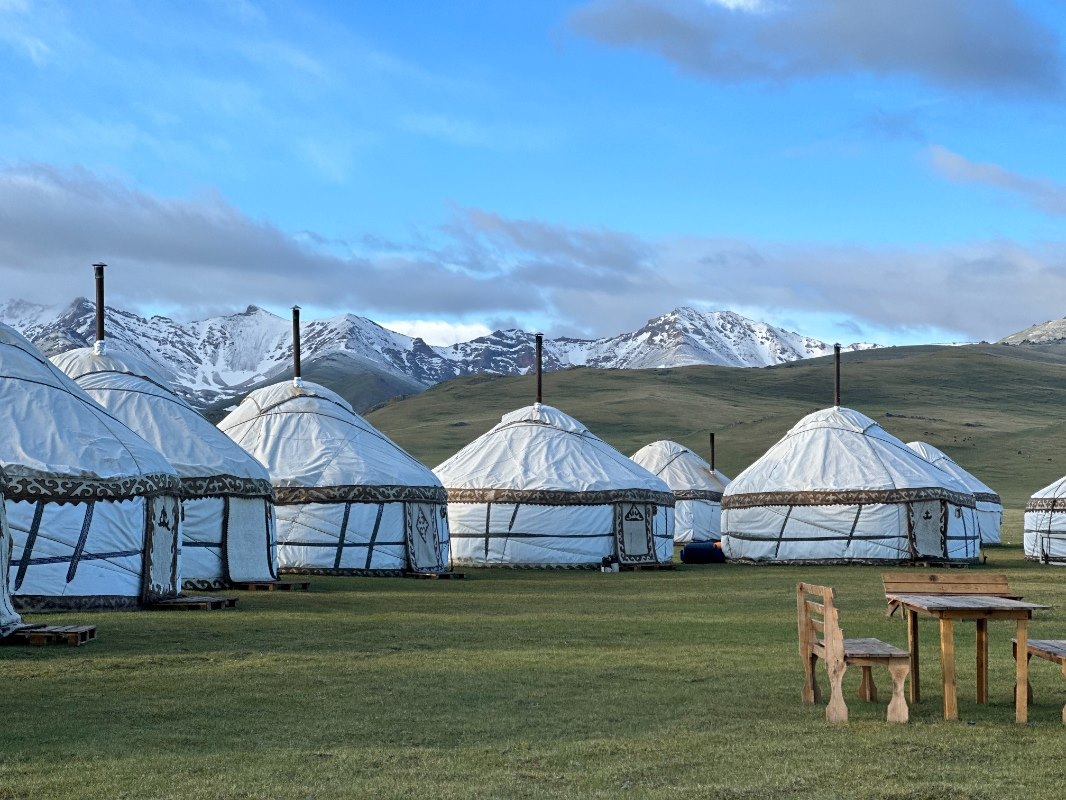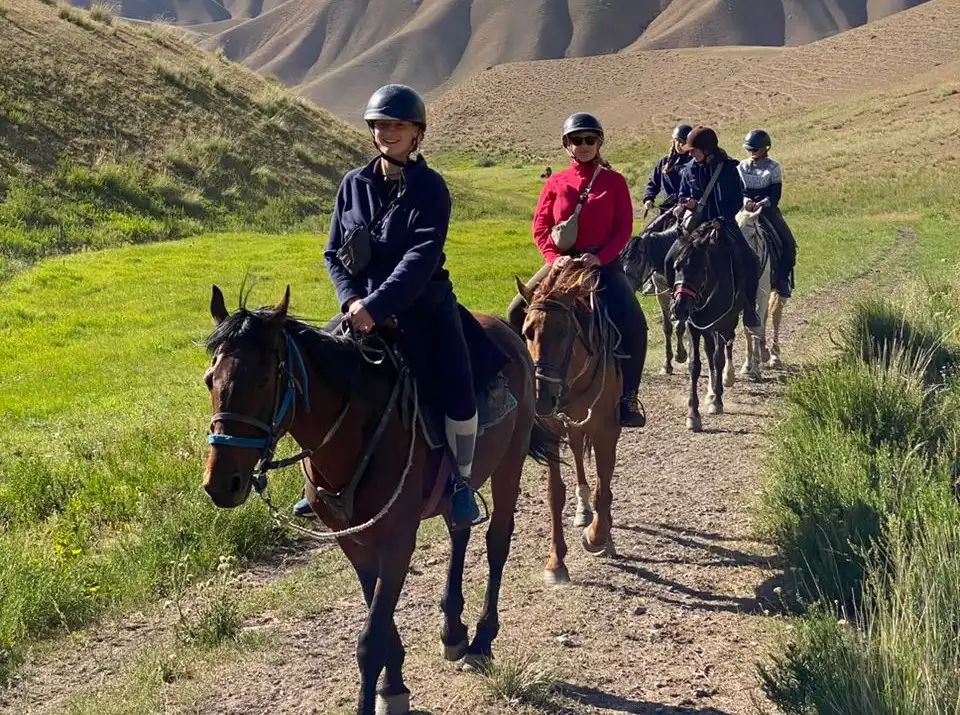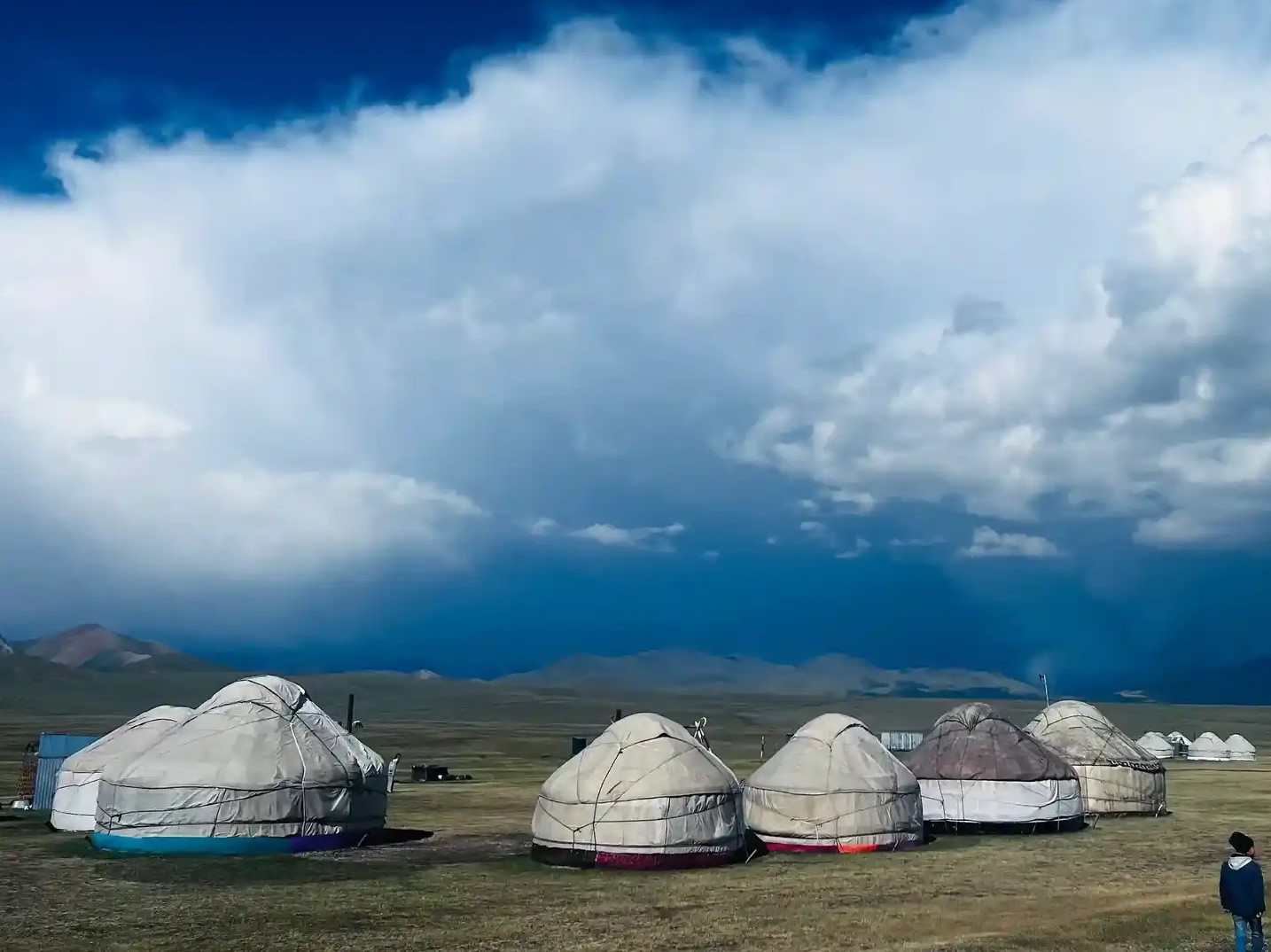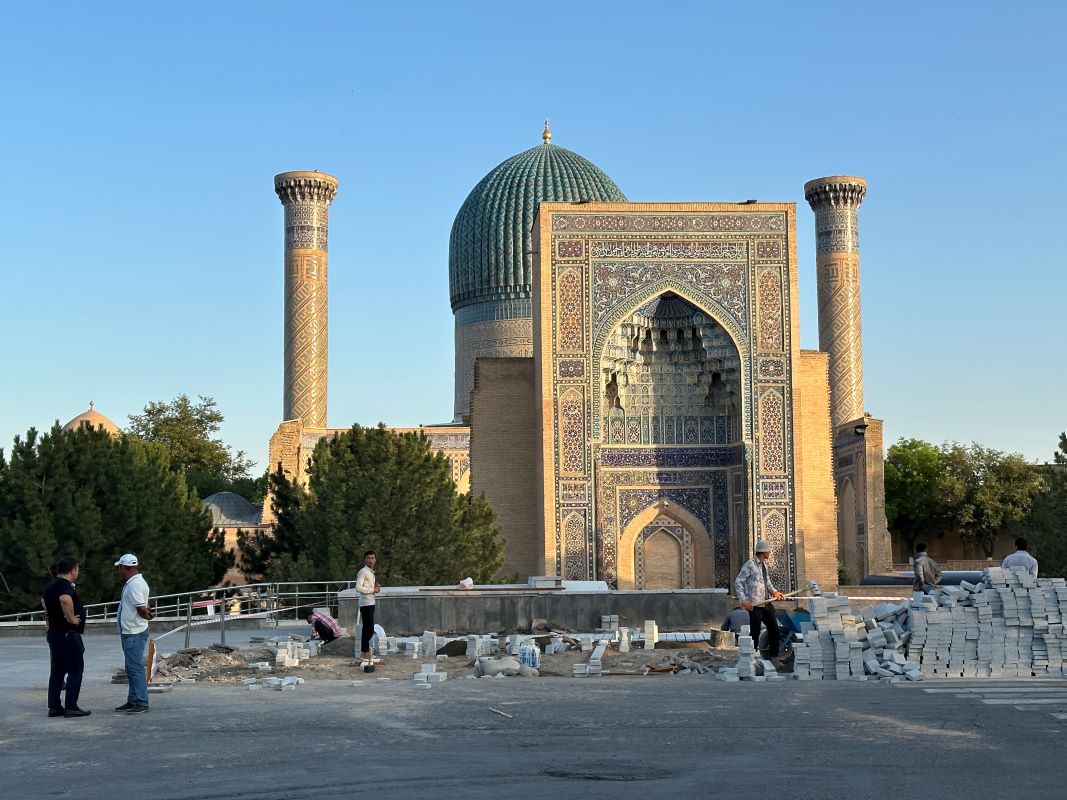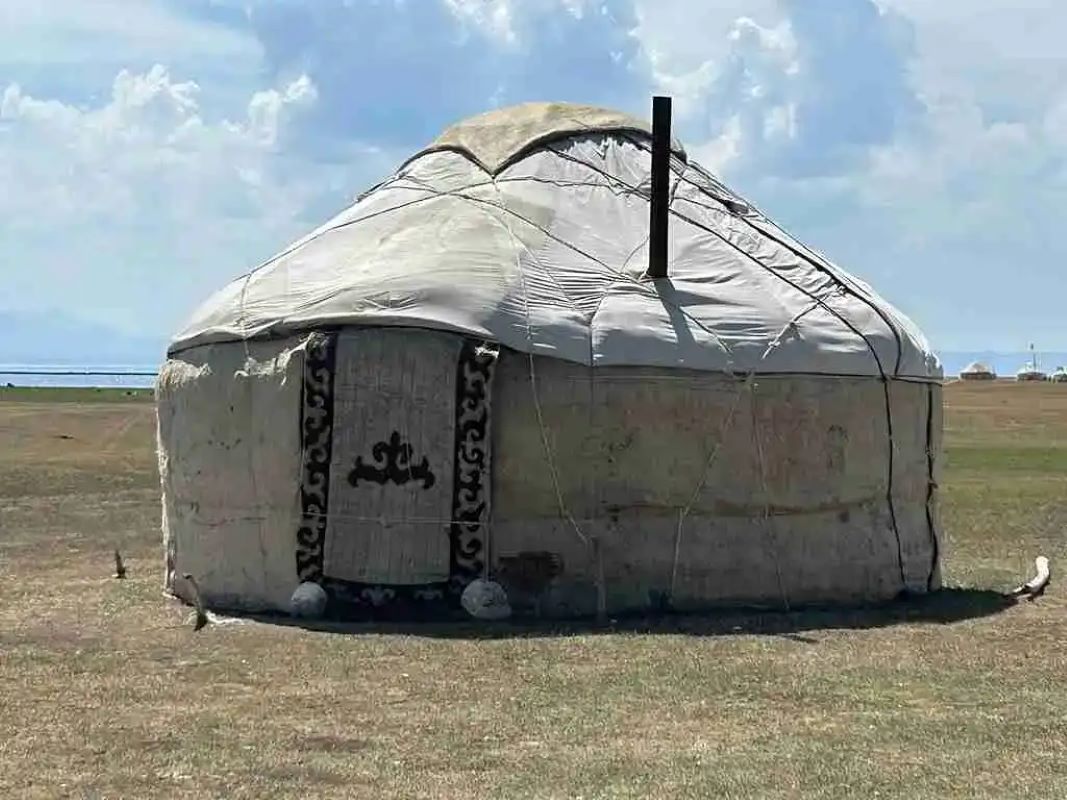Son-Kul Lake (Son-kel, Sonkul) is located in the northwestern part of the Naryn region of Kyrgyzstan. It is the second largest lake in the country after Issyk-Kul.
Translated from Kyrgyz, Son-Kul means “lake inhabited by wild ducks”. The lake is located in the Tien Shan Gorge, at an altitude of 3016 meters above sea level. The area of Son-Kul is 278 sq. km, length – 28 km, width – 18 km. The average depth is 8.6 m, and the maximum is almost 14 m.
Part of the lake is located on the territory of the Karatal-Zhapyryksky National Reserve, established in 1994. The waters of Son Kul are inhabited by such species of fish as white-spotted char, scaly char, rare scaly muskrat, Tibetan char, high char, marinka and peled. It is curious that until 1959, because of the cold climate, there were no fish here. They were brought here for breeding. The lake is also home to many birds. Snow leopards, foxes and wolves live in coastal and mountainous areas. There are few trees here, but there are many medicinal herbs that the locals collect, dry and insist in boiling water. Edelweiss also grows here.
Son-Kul Lake is a lake formed as a result of melting glaciers. The river of the same name flows out of it, flowing into the Naryn River. The waters of Son-Kul freeze from the end of June to the beginning of June. In winter, the temperature in the region can reach -20 °C. The road to the reservoir also freezes, and the lake can only be seen in the warmer months, since the road to it is closed. Therefore, in winter, Son-Kul can be considered an uninhabited lake.
The beauty of the lake is impressive. The azure waters of the lake attract not only tourists, but also local residents. Son-Kul is surrounded by green pastures, where flocks of sheep and horses graze in summer. Shepherds bring their cattle here to live in specially built yurts during the summer months. These meadows are called “jailoo” (pasture). During the cold season, the yurts are closed.
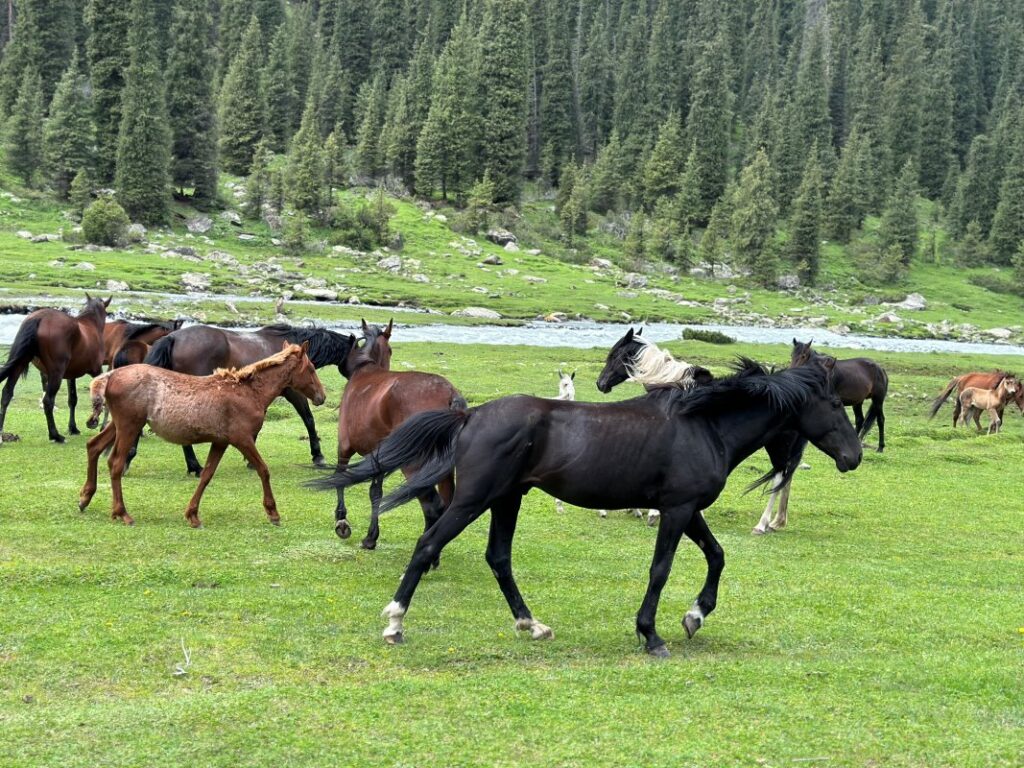
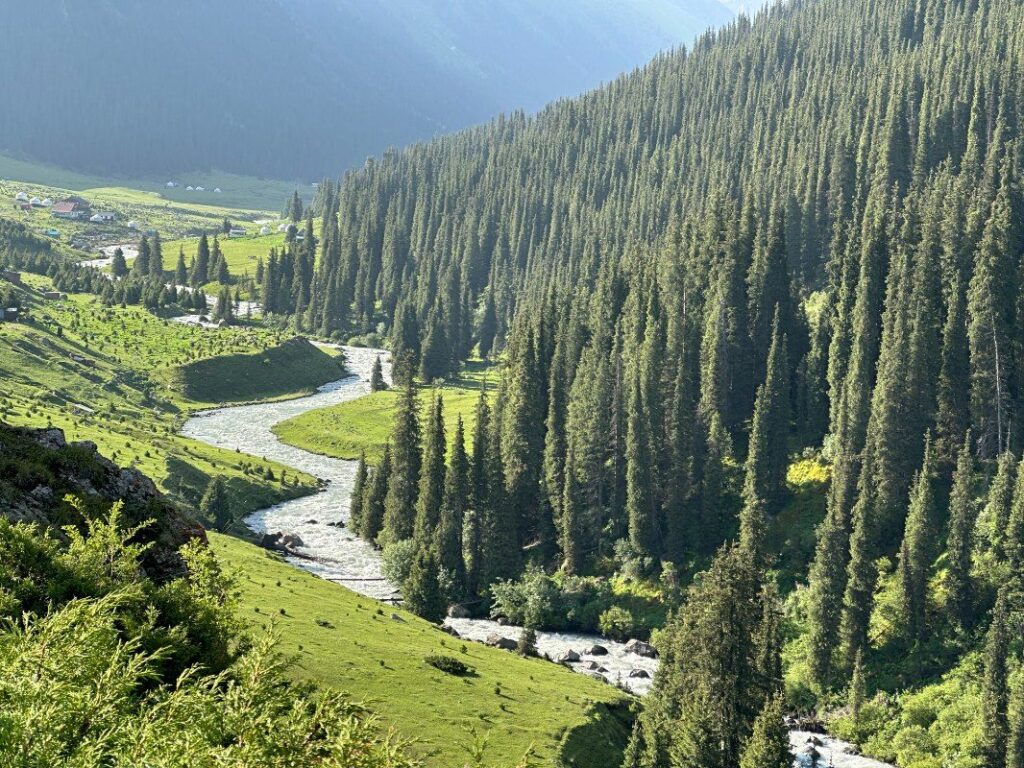
The road from Bishkek to Son-Kul takes 6-7 hours. Most of the roads are in normal condition, but some of them are off-road. The road passes through a picturesque hilly area. It should also be remembered that the beautiful panorama of Son Kul opens only on the west bank. You can get to Son-Kul from the Kalmak-Ashuu pass, from the Terskey-Torpok pass and, on the southern coast, from the Moldo-Ashuu pass. It is most convenient to get to Son-Kul on foot or by horse through the Chilbel, Uzbek and Tuz-Ashu passes.
If you want to join the real nomadic life, the locals will be happy to provide you with a felt-insulated state yurt for use. By the way, there are no buildings near the lake. And the temperature in the region even in summer does not exceed +15 ° C during the day, and at night it can drop to negative values. But you should not be afraid of the cold. In addition to natural insulation, special wood-burning stoves are installed in the yurts. Horse riding and fishing can be enjoyed on the shores of Son Kul Lake.
Around the lake you can see ancient rock carvings, indicating that many centuries ago shepherds brought their cattle here.
On the northern shore of Lake Son-Kul stands the only building in the district – the mausoleum of Tailak Baatyr (gumbez Tailak), the Kyrgyz hero of the late XVIII – early XIX century. He defended the lands of modern Kyrgyzstan from Chinese and Kokan invasions. His colleague and brother Atanai is buried next to the hero.
In the village of Kok-Oi, located near Son-Kul, there is a mineral spring Emel. It is believed that this mineral water has the same composition as Borjomi.

